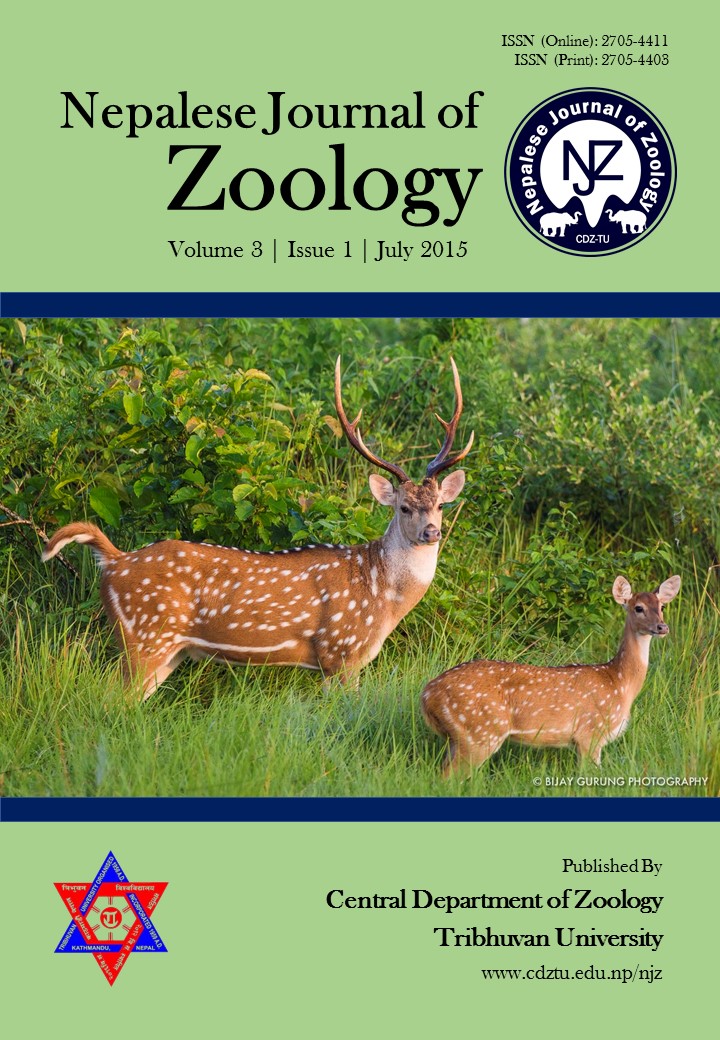Isolation of Plant Parasitic Nematodes in Pear Orchard at Chhaimale (Pharping) VDC of Kathmandu
DOI:
https://doi.org/10.3126/njz.v3i1.30869Keywords:
Isolation, Root nematodes, PearAbstract
Plant-parasitic nematodes are of considerable importance worldwide and their devastating effects on crops have major economic and social impacts. They depend on plants and feed on all parts of the plant including roots, stems, leaves, flowers and seeds. The majority of species of plant-parasitic nematodes live on or around plant roots. Nematode damage of the plant’s root system also provides an opportunity for other plant pathogens to invade the root and thus further weakens the plant. A study was carried out to isolate and identify different genera of plant parasitic nematodes from the rhizospheres of pear plants in one of the major pear producing area of Nepal, Chhaimale VDC of Kathmandu district.
Altogether seven species of root nematodes were isolated from soil samples collected: Tylenchorhynchus sp., Longidorus sp., Helicotylenchus sp., Hoplolaimus sp., Aphelenchus sp., Mononchus sp. and Diplogaster sp. Among isolated species of nematodes Tylenchorhynchus sp., Longidorus sp., Helicotylenchus sp., and Hoplolaimus sp. are parasitic, Aphelenchus sp. is mycophagic and Mononchus sp. and Diplogaster sp. are predatory in nature. Number of nematodes were not significantly different in different season and at different locations.
Downloads
Downloads
Published
How to Cite
Issue
Section
License
This license enables reusers to distribute, remix, adapt, and build upon the material in any medium or format for noncommercial purposes only, and only so long as attribution is given to the creator.

